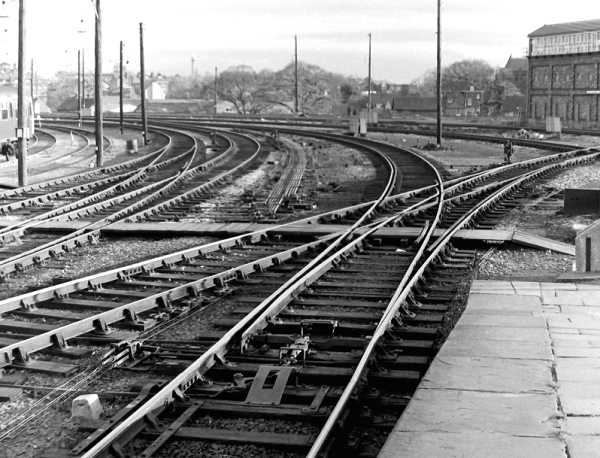@gt40driver
Hi Martin,
Welcome to Templot Club.

If you are starting 00 track building from scratch, there are 2 basic options,
00-BF and
00-SF.
00-BF is the traditional 00 gauge standard which will run all your Bachmann models without any problems. Including around sharp curves. Such models are fitted with "RTR wheels" which are about 2.8mm wide.
However, if you build any 00 gauge wagon or coach kits, they will probably be supplied with "Kit wheels" which are narrower, usually 2.3mm wide. You will find that they run quite bumpily through 00-BF V-crossings (frogs), falling a little way into some of the gaps in rails. You could solve this by discarding the supplied kit wheels and obtaining Bachmann or Hornby wheels for them instead.
The alternative is
00-SF which has narrower gaps in the rails at the V-crossings. Kit wheels will run very smoothly on 00-SF. The vast majority of Bachmann models will also run well on 00-SF, but you might find an occasional pair of wheels which needs some adjustment to the back-to-back dimension between the wheels, needing some slight widening.
The narrower gaps in 00-SF also give the track a better appearance, being closer to the appearance of real track.
You can't use 00-SF for very sharp curves, such as those found in typical clip-together set-track. However, 00-BF and 00-SF pointwork can be mixed together on the same layout, so if your model railway space requires some sharp curves in one place you could use 00-BF there and 00-SF everywhere else.
In summary, if you intend to use only ready-to-run models from Bachmann, Hornby, etc., you would probably want to use
00-BF for simplicity. If you like building your own kits and models, you might want to try
00-SF for smoother running and better appearance.
Precision gauge tools for building 00-SF pointwork are available from C&L. Gauges for 00-BF are available from several suppliers, but not always with great precision. When building 00-BF it is a good idea to use the 15.2mm check-gauge tools from 00-SF instead (the dimension is the same for both, but the precision might not be).
edit: if building
3D plug track you do not need gauge tools. This also means you could try some of the other options such as these which will all accept a mix of kit wheels and RTR wheels. As you go down this list, the running quality of kit wheels decreases, but there is more tolerance on varying RTR wheel back-to-backs:
00-SF
00-MF
00-IF
00-BF if
only RTR wheels are used.
for all of those the
check gauge is
15.2mm, and
check gauge tools for the purpose are available from C&L and DCC Concepts. (
not needed for plug track.)
All these can be mixed on the same layout because the
check gauge for all them is the same -
15.2mm.
Many Templot users are building
00-SF track and will be happy to add their help and advice here. Just ask.

The other 00 gauges are historical variations on 00 gauge which can be ignored if starting from scratch. 00-DOGAF should be avoided because your Bachmann models will not run on it without modification. 00/H0 is a match for older train sets and models from the 1950s and 60s which are popular with collectors.
cheers,
Martin.
 Search
Search

